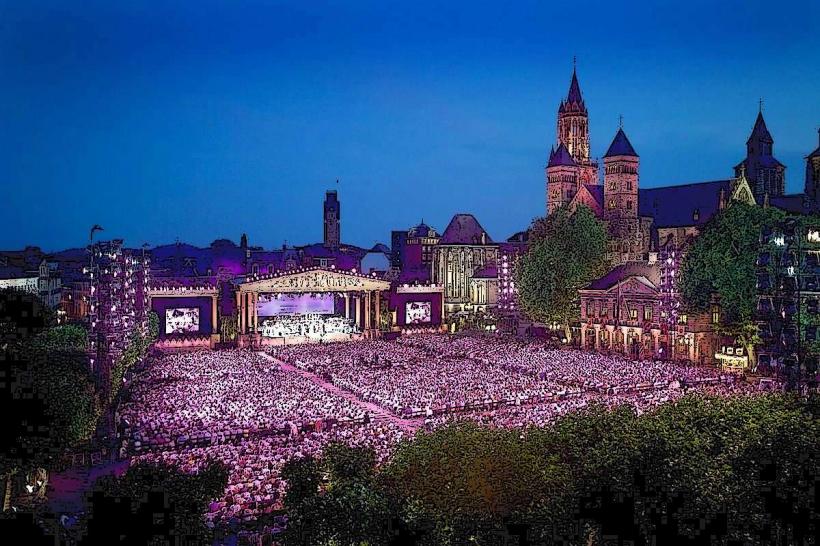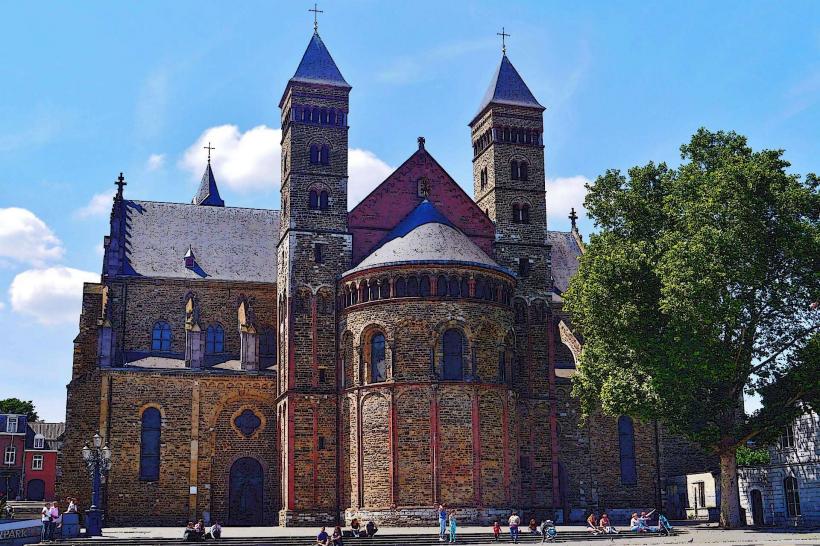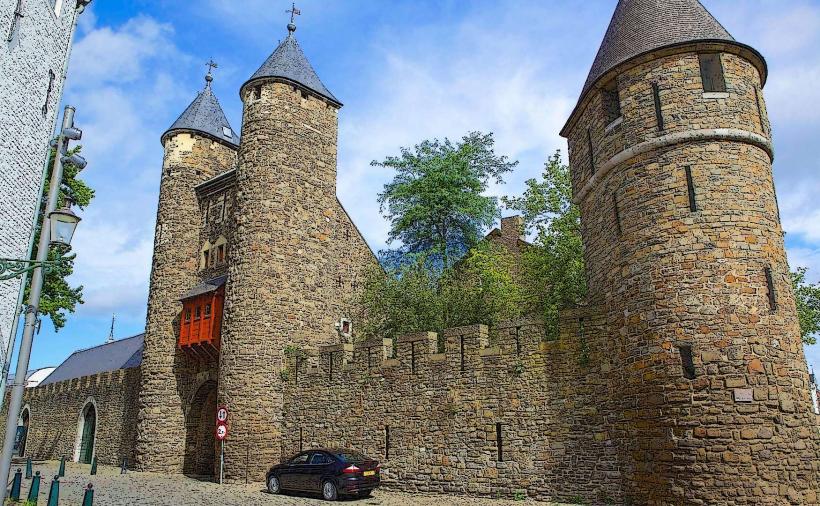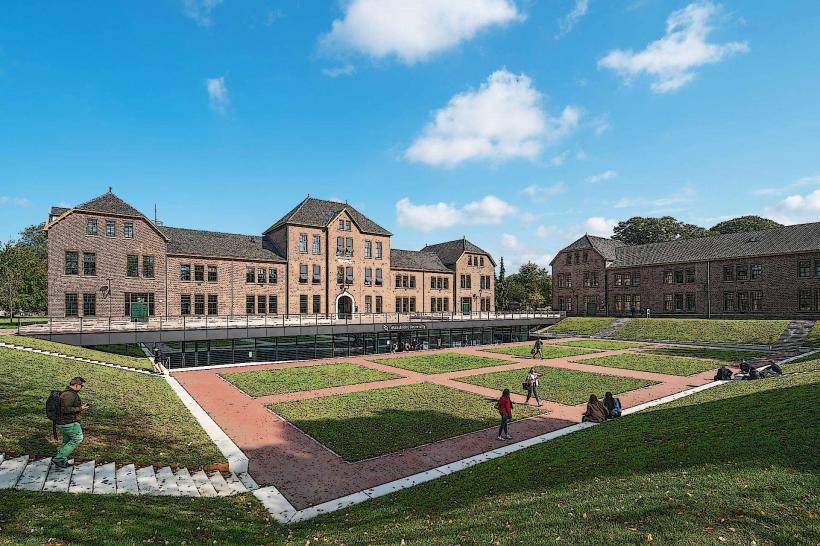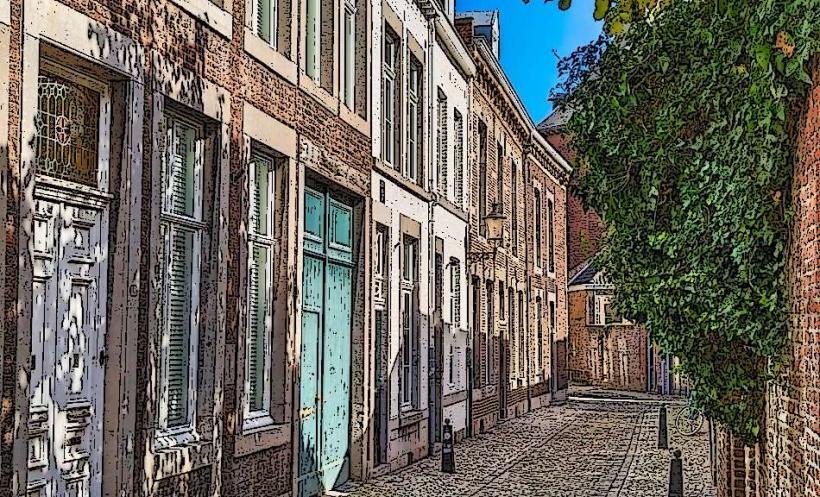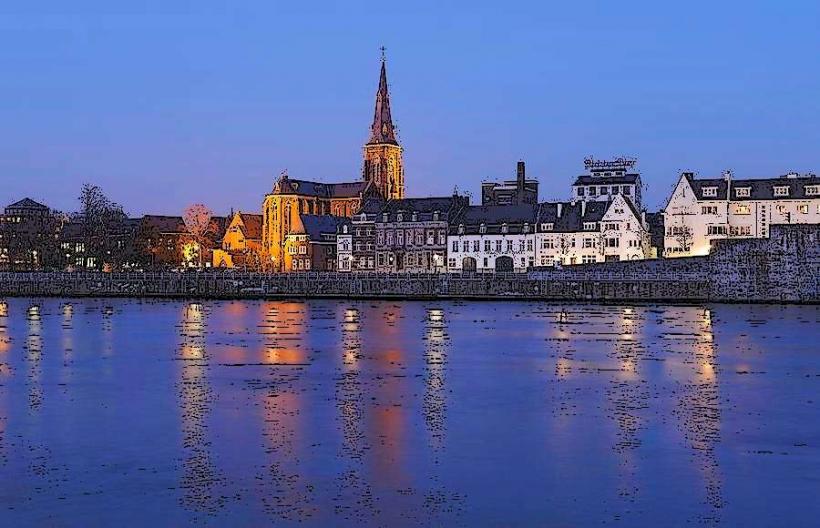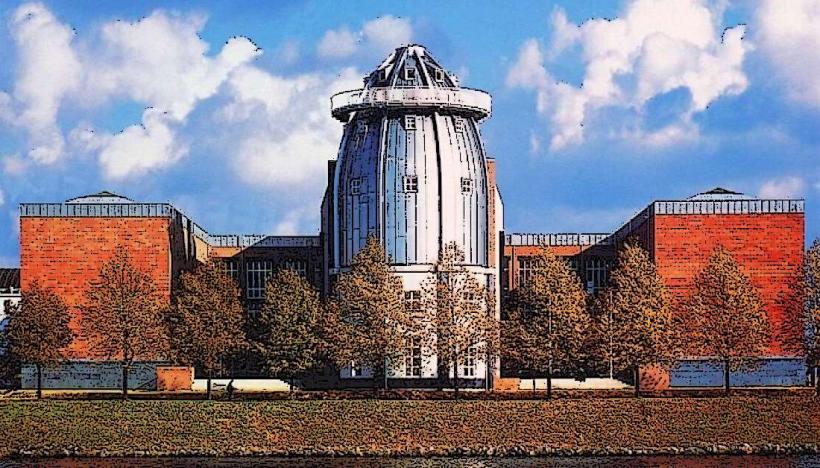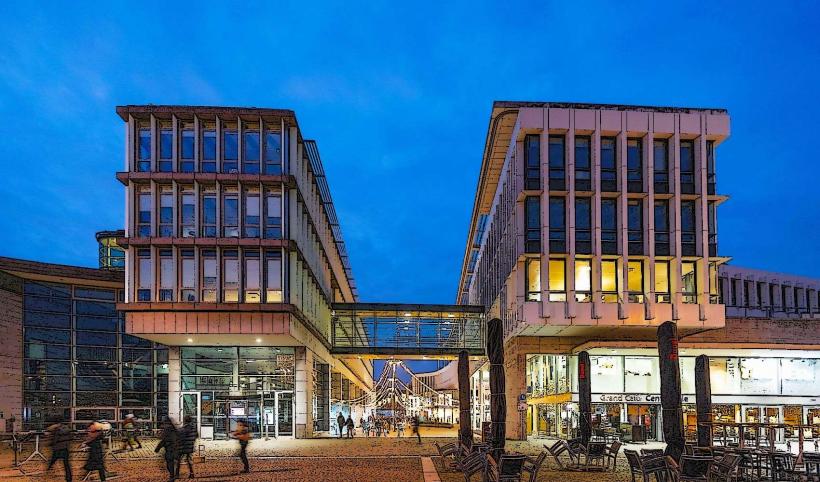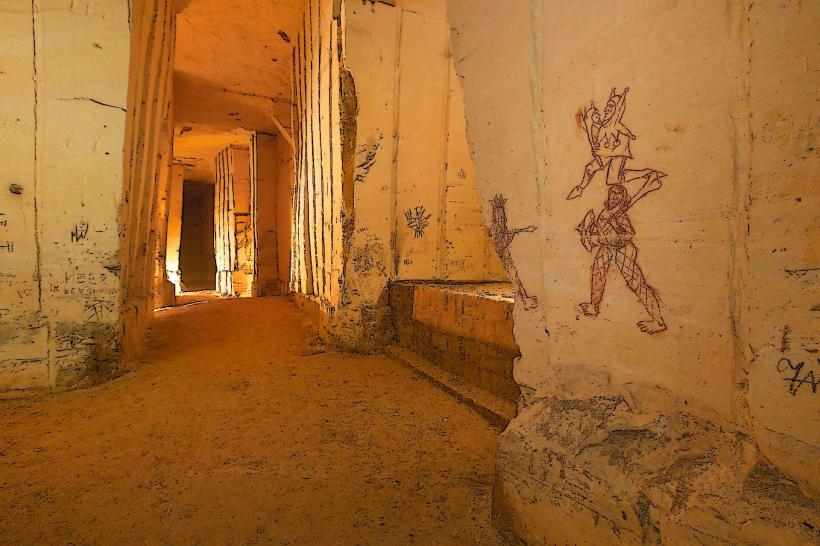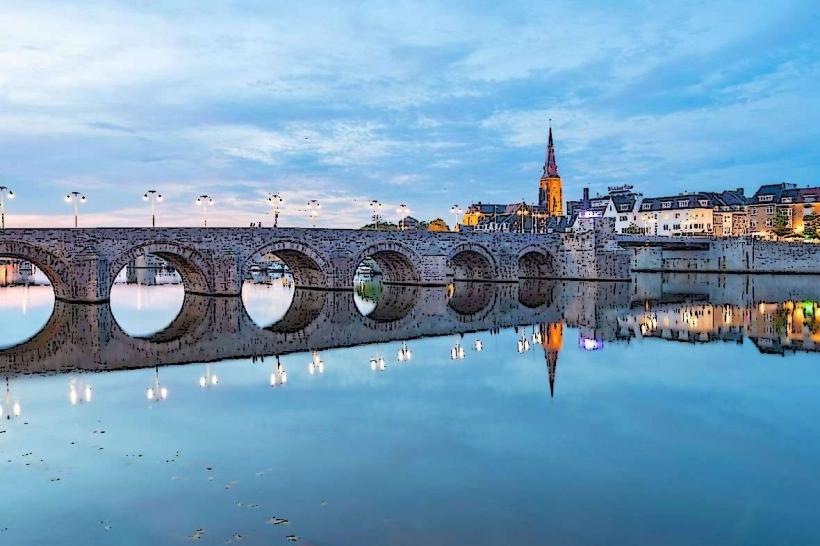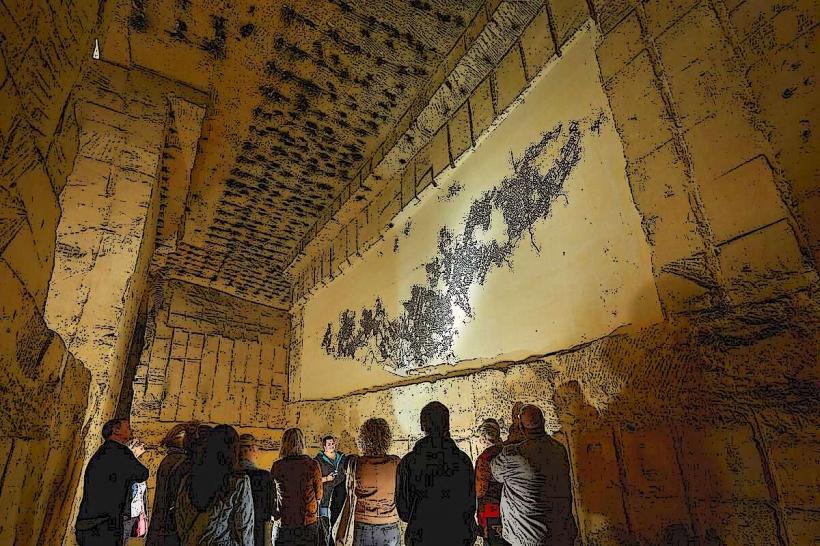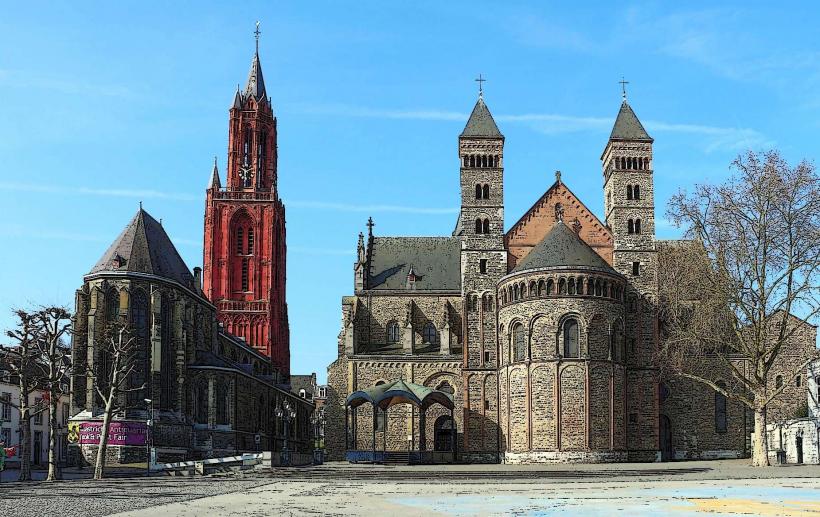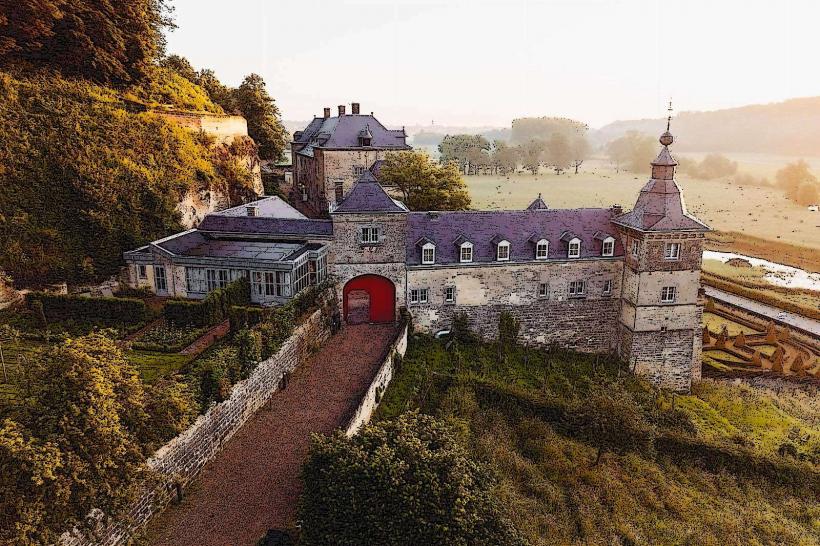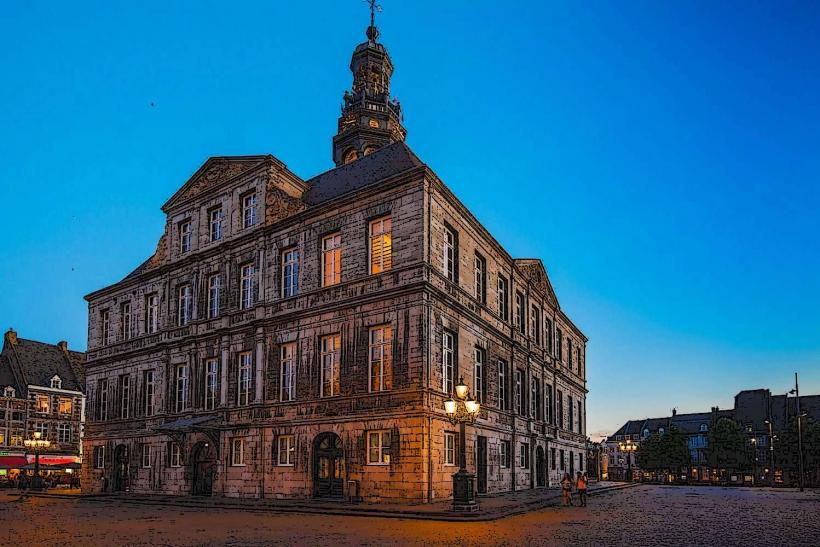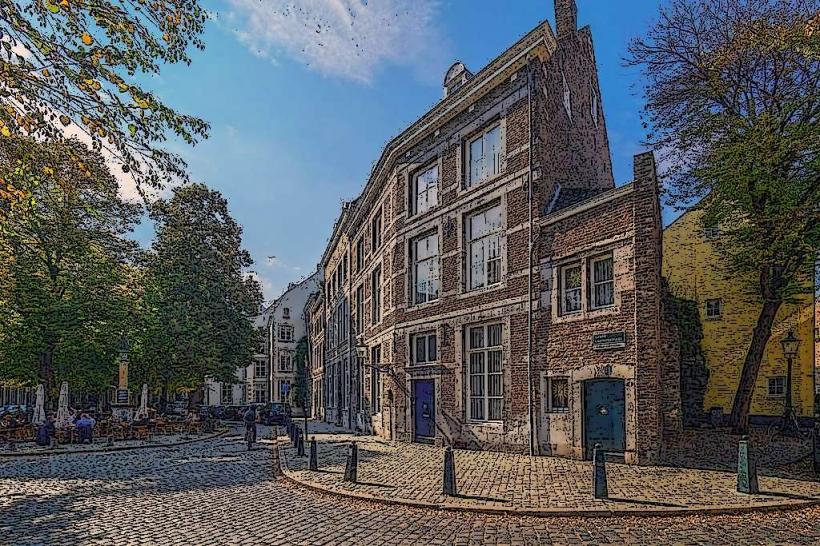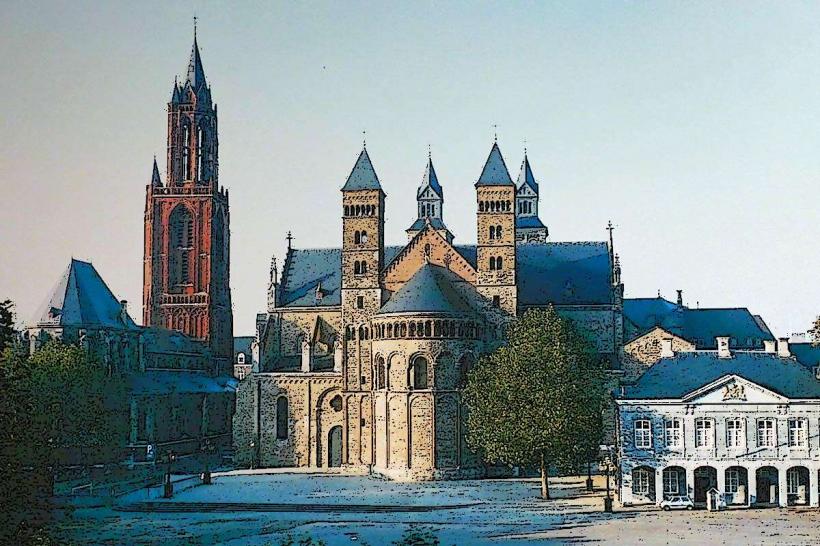Information
Landmark: Basilica of Our LadyCity: Maastricht
Country: Netherlands
Continent: Europe
The Basilica of Our Lady (Dutch: Basiliek van Onze Lieve Vrouw) is a stunning Roman Catholic church located in Maastricht, the southernmost city in the Netherlands. Known for its historical significance, religious importance, and architectural beauty, the basilica is one of Maastricht’s most important landmarks. It is dedicated to Our Lady of the Assumption, the patron saint of the city, and holds a significant place in both the spiritual and cultural life of the area.
1. History and Origins
- Foundation: The Basilica of Our Lady was originally founded in the 11th century as a pilgrimage church. The first church on the site was built after the discovery of a statue of the Virgin Mary, which became an important object of veneration. The statue, often referred to as the "Our Lady of Maastricht", was believed to have miraculous powers and attracted many pilgrims to the church.
- Romanesque to Gothic Transformation: The church was initially constructed in the Romanesque style, with thick stone walls, rounded arches, and small windows that gave the building a fortress-like appearance. Over time, the church was expanded and modified, especially during the 13th and 14th centuries, when parts of the church were rebuilt in the Gothic style. These additions brought in features like pointed arches, taller windows, and intricate stonework, reflecting the changing architectural trends of the period.
- Basilica Status: The church was elevated to the status of a basilica in 1969 by Pope Paul VI, a recognition of its importance as a religious site. Today, the basilica remains an active place of worship, as well as a popular site for tourists and pilgrims alike.
2. Architectural Features
- Romanesque Exterior: The exterior of the Basilica of Our Lady retains much of its original Romanesque character, particularly in its facade and west front. The church features a large, imposing entrance with a portico, which leads into the nave. Above the entrance, a rose window and decorative sculptures add to the charm of the church’s exterior.
- Twin Towers: The basilica features two towers on either side of its facade, which are typical of Romanesque and Gothic churches. The towers are relatively short compared to other prominent churches in Europe but add to the basilica’s imposing presence. They are capped with steeples, and the front of the church is flanked by two large portals that are beautifully adorned with sculptures of religious scenes.
- Gothic Interior: Inside the basilica, the Gothic elements are more apparent, with vaulted ceilings, pointed arches, and large stained-glass windows. These windows feature intricate biblical scenes and add a colorful, light-filled atmosphere to the interior of the church. The high altar is another notable feature, with detailed wooden carvings and religious symbols.
- Crypt and Relics: The basilica houses a crypt that contains relics and the tombs of important figures, such as bishops and clergy associated with the church. Pilgrims continue to visit the crypt as part of their religious observance.
- Statue of Our Lady: The centerpiece of the basilica is the statue of Our Lady, a revered image of the Virgin Mary that has been in the church for centuries. The statue is kept in a chapel and remains a focal point for the devotion of the faithful. Many pilgrims come to see the statue and to pray for blessings, healing, or intercession.
3. Religious Significance
- Pilgrimage Site: The Basilica of Our Lady is one of the most important pilgrimage sites in the Netherlands, particularly for those devoted to the Virgin Mary. The statue of Our Lady of Maastricht is believed to have miraculous powers, and it has attracted pilgrims from all over Europe for centuries. The church’s religious significance is tied to the Miracle of Maastricht, a story of healing and divine intervention associated with the statue.
- Feasts and Celebrations: The basilica is the center of many religious events throughout the year, especially during the Assumption of Mary on August 15, when the church celebrates its patronal feast day. During this time, special masses, processions, and celebrations are held in honor of Our Lady.
- Role in the Local Community: The Basilica of Our Lady continues to play a key role in the spiritual life of Maastricht. It hosts regular Mass services, religious ceremonies, and events such as weddings and baptisms. It also remains a place for personal prayer and reflection for both locals and visitors.
4. The Basilica in the Modern Day
- Tourist Attraction: The Basilica of Our Lady is one of Maastricht's most visited landmarks, drawing tourists not only for its architectural beauty but also for its rich history and spiritual significance. It is a must-see for anyone visiting the city, offering visitors a chance to admire the building’s Romanesque and Gothic elements, as well as the opportunity to learn about the church’s history.
- Concerts and Cultural Events: The basilica is often used for cultural events as well, including classical music concerts, choir performances, and organ recitals. These events take advantage of the basilica’s stunning acoustics and beautiful interior, providing a blend of spiritual and cultural experiences for visitors.
- Restoration and Preservation: Like many ancient buildings, the Basilica of Our Lady has undergone various restorations and renovations over the years to preserve its architectural integrity. Efforts have been made to ensure that the church remains a vital place of worship and cultural significance for generations to come.
5. Visiting the Basilica of Our Lady
- Location: The basilica is located in the center of Maastricht, near Vrijthof Square and other important landmarks such as the Basilica of Saint Servatius and the Helpoort. Its central location makes it easy to visit as part of a broader exploration of the city’s historic district.
- Visitor Experience: Visitors to the basilica can explore the interior, admire the artwork and architecture, visit the crypt, and take time to view the statue of Our Lady. It is also a peaceful place for reflection and prayer for those seeking a spiritual experience.
- Access and Facilities: The basilica is open to visitors and pilgrims alike, with guided tours available for those interested in learning more about the church’s history. Mass services and other religious events are open to all who wish to participate.
6. Conclusion
The Basilica of Our Lady in Maastricht is a breathtaking example of Romanesque and Gothic architecture and holds a deep spiritual significance for both locals and visitors. As one of the most important pilgrimage sites in the Netherlands, the basilica continues to be a place of worship, reflection, and devotion. Its statue of Our Lady remains a focal point of religious life in Maastricht, and the church’s stunning design and historical legacy make it a must-visit landmark for anyone exploring the city. Whether you are drawn to its history, architecture, or spiritual atmosphere, the Basilica of Our Lady offers a profound and enriching experience.

